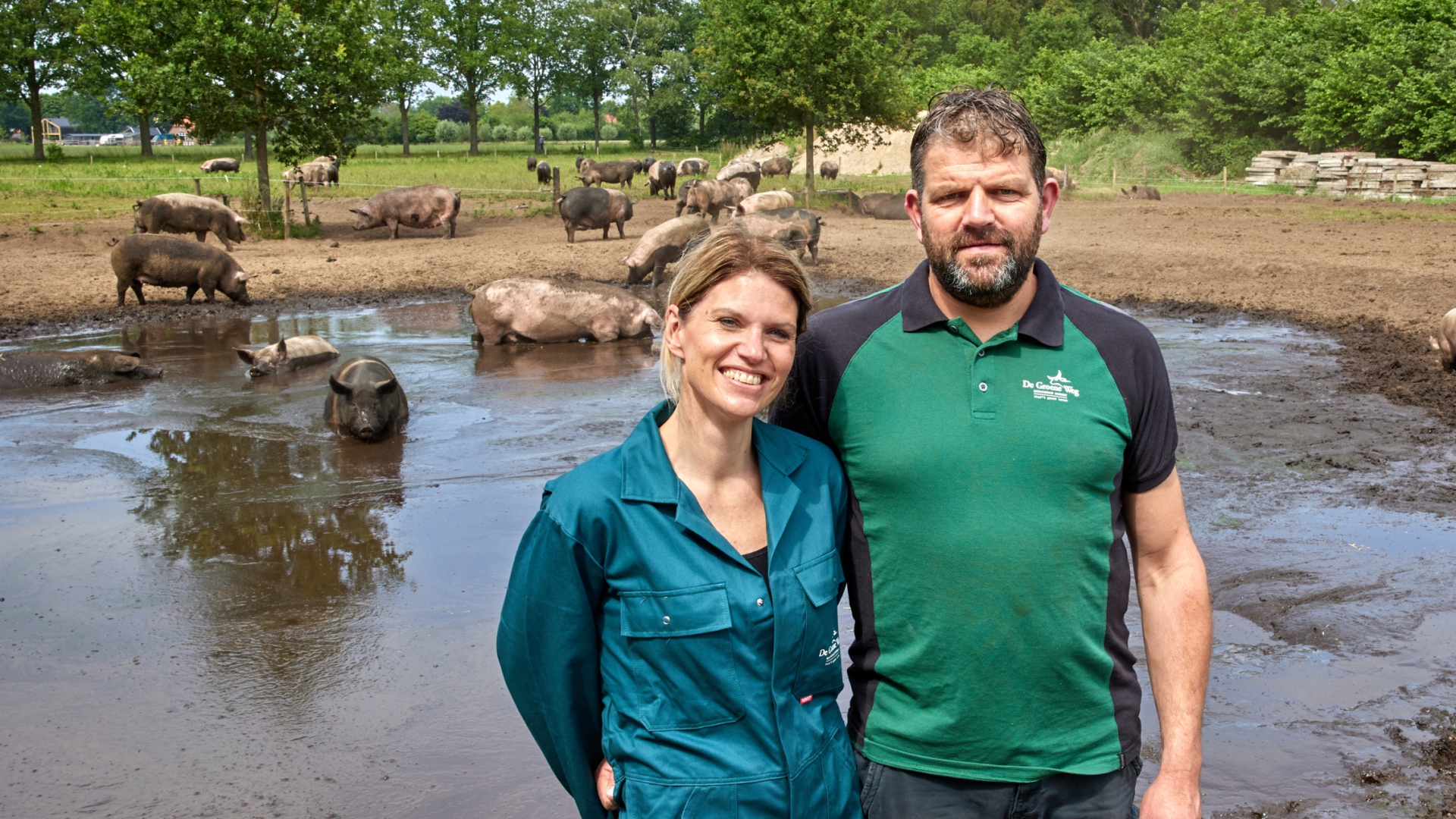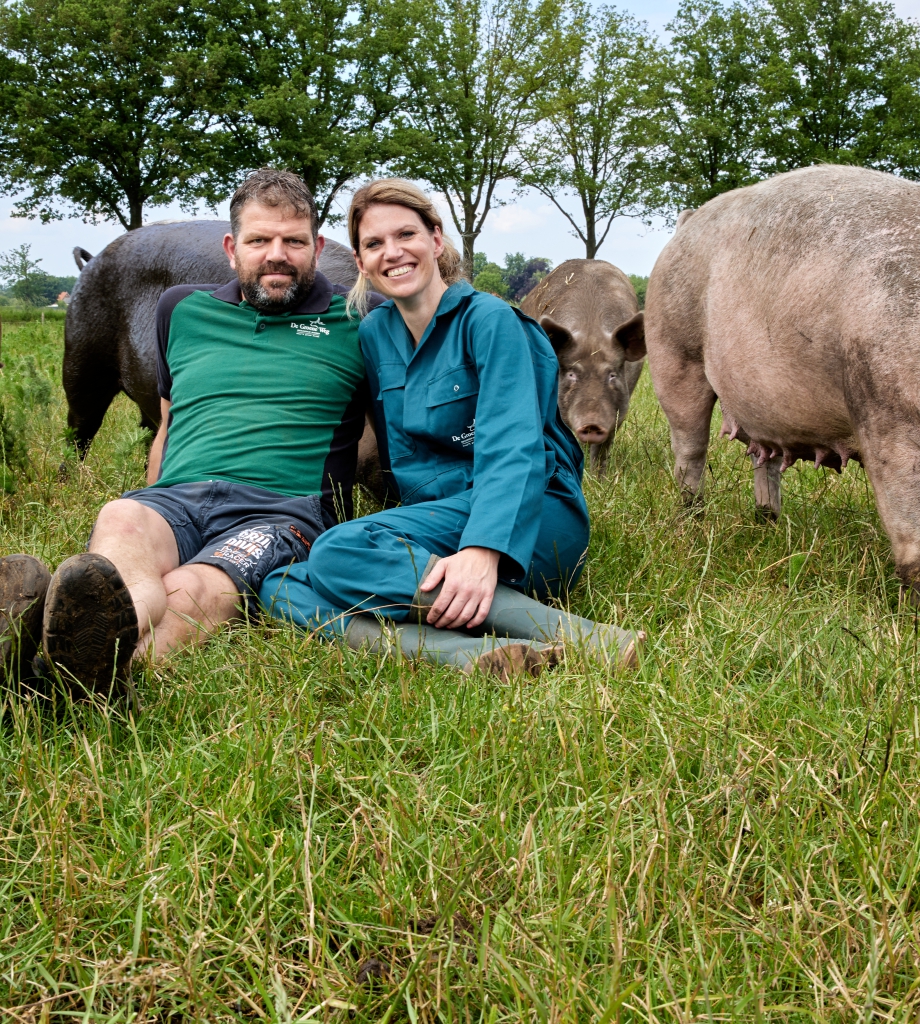Families Rouwhorst and Hahné

The pigs on the organic farm owned by the Rouwhorst and Hahné families thoroughly enjoy being outdoors. They sunbathe in the outdoor enclosures, and in the pasture nearby, sows take a dip in the mudhole, grunting contentedly. “By choosing to go organic, we’ve not just gained happy pigs. There are now also quite a few other happy animals on the farm.”
The organic farm, with its 270 sows and 500 fattening pigs, is run by Henk and Ria Rouwhorst together with their daughter, Nancy, and son-in-law, Mark Hahné. Why organic? Henk is quite clear about that: “I think we should let nature take its course a little more. We’re used to thinking of all the things that don’t fit into our plan as weeds. And those weeds have to go.” That approach was no longer acceptable to this farmer from Mariënvelde. “In my younger years, I used a lot of fertiliser. But I realised that it didn’t make the meadow birds happy. It prevented the growth of many plants and herbs that provide food for animals. It was time for change.”
In addition to keeping organic pigs, the family also has 28 hectares of organic arable land where they grow grains for the pigs. “We use the grain and straw as feed and bedding for the animals. About 30 per cent of our pig feed comes from our own land. It’s a beautiful circle.”


‘We need to let nature take its course a little more.’
Processing your own grain for pig feed ensures that crops are fully utilised, reducing costs. Moreover, it provides consistency and stability in the animals’ diet. “The composition of the grain we grow on our land remains the same, so they only have to adjust to the feed we buy in, which changes according to their stage of life.” Henk and Mark have been processing their grain into compound feed for a while now. “And we’re considering combining our grain crop with field beans, which have a higher protein content. We’re constantly working on providing our pigs with the best quality feed.”
It’s not just the pigs that enjoy the things that grow and bloom on the farm. Since the switch to organic farming, Henk has seen animals move into areas where he once saw meadow birds vanishing. All kinds of things are growing again now that we no longer use chemical-synthetic pesticides. It attracts lots of insects and other animals. I always say that every life has a purpose. One life is almost always a source of food for another. We can’t survive without each other.” And so the family’s farmhouse serves as a habitat for dozens of swallows and two species of owl. “We also have kestrels and three buzzard breeding pairs just 200 metres from our yard,” Mark adds. “They raise their young in our vicinity every year. We ‘simply’ let nature take its course and the result is an abundance of beauty.”
The beauty of organic farming is something the family likes to share with others. “Our farm is located on a relatively quiet road on a network of cycle paths,” Mark says. “We placed a bench near the mudhole and we often see people sitting there admiring the pigs. So, we’re a great advert for the organic sector!”
